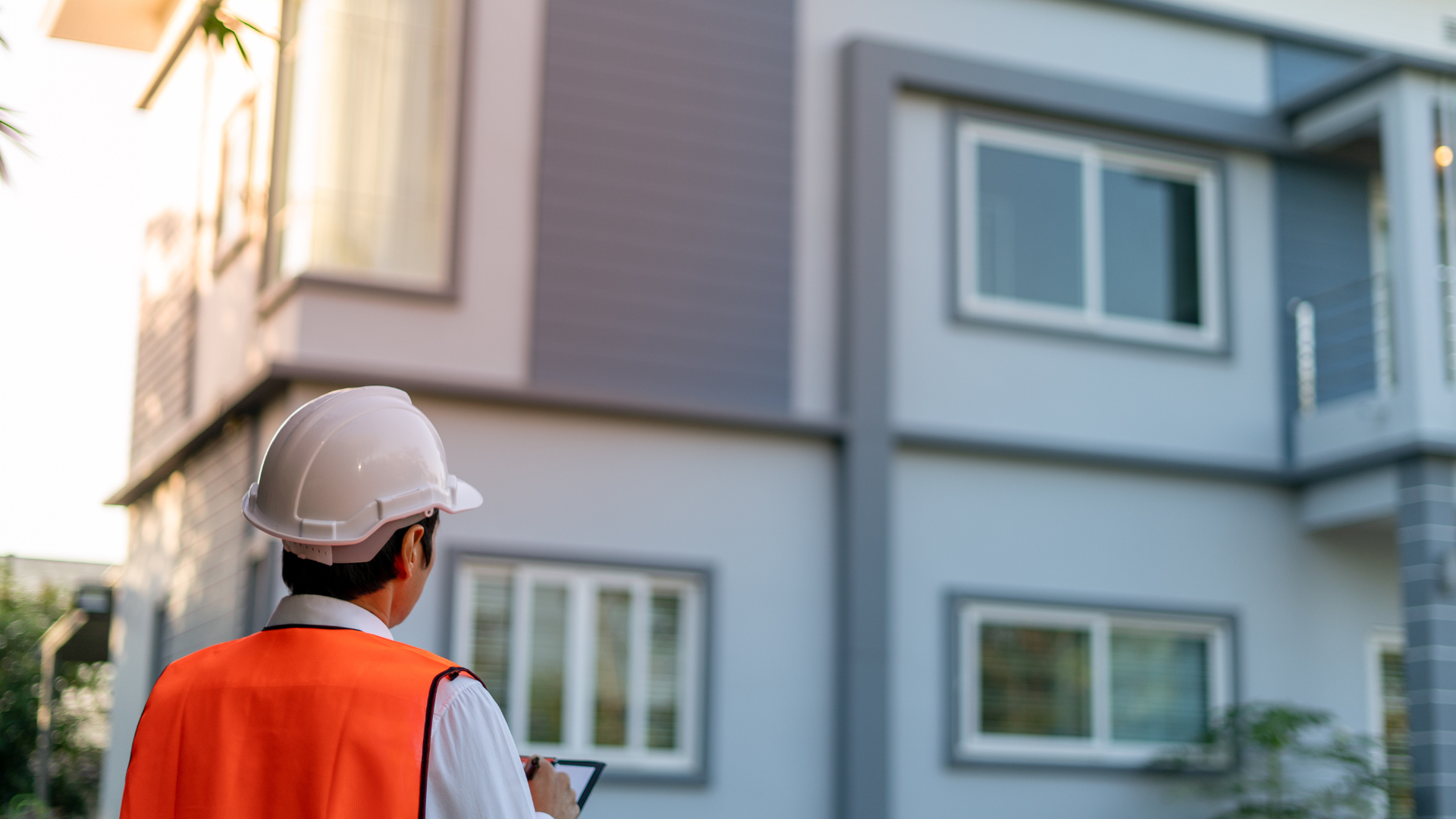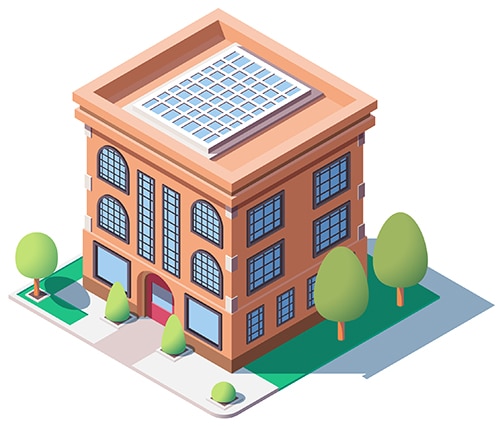
Construction defects have burgeoned into significant construction defect cases over the years.
This article delves into the complexities surrounding construction defect repair, shedding light on the vast issues many homeowners and commercial building owners face, from inferior materials to poor waterproofing techniques.
The Significance of Addressing Construction Defects
Nature of Construction Defects
Construction defects come in many shapes and sizes. Some are cosmetic, such as discoloration or minor surface irregularities, which might affect the building’s appearance but not function. However, there are more serious defects that threaten the structural integrity of the property.
Beyond the building’s exterior walls, these defects can exist in foundational elements, roofing, and core architecture. It’s essential to address these promptly; delaying repairs can lead to more extensive damage over time and can jeopardize the safety of the building’s occupants.
Many Homeowners Affected
The reality is that a significant number of homeowners grapple with construction defects. A common issue many face is water intrusion, often due to inadequate waterproofing or flawed roofing installations.
Beyond cosmetic issues, water intrusion can lead to problems like mold growth, structural damage, and the degradation of building materials. Additionally, damages from unforeseen events like floods can compound these problems.
These issues detract from a home’s aesthetic appeal and, more critically, compromise its safety and habitability.
Commercial Building Concerns
Commercial buildings bring their own set of challenges. These structures, governed by more detailed construction contracts, also have complex systems. Defects in commercial buildings can range from poor drainage systems, which can lead to water pooling and foundation issues, to faulty electrical wiring that poses a fire hazard.
Because these buildings often serve as workplaces or public spaces, there’s an added layer of responsibility to ensure the safety and well-being of more people. Addressing defects in commercial structures is not just about upholding contractual obligations but also ensuring that these buildings remain safe and functional for their intended purpose.
Spotting the Culprits – Causes of Construction Defects
Inferior Materials
Choosing cheaper materials initially might appear cost-effective, but this decision can lead to higher costs later. The savings are often offset by the need for frequent repairs when these inferior materials fail ahead of time. For example, poor-quality concrete might show cosmetic cracks initially, but deeper structural issues could soon threaten the building’s stability.
Similarly, while high-grade steel resists environmental challenges, inferior steel corrodes quickly in certain conditions. Lower-quality wood is more prone to pests like termites and faster decay.
Another significant concern with inferior materials is latent defects. These defects, often hidden after construction, become evident over time, requiring costly repairs. Moreover, the safety risks posed to building occupants due to these defects are considerable.
Unskilled Labor
The construction crew’s skill and expertise directly affect the quality of the completed structure.
Unskilled labor, marked by workers lacking proper training or experience, often results in errors with potentially severe repercussions. Such mistakes span various construction facets.
For instance, incorrectly installing ventilation systems can pave the way for trapped moisture, leading to mold growth and compromised indoor air quality.
Issues concerning fire safety, improperly installed sprinklers, or alarms can also render the building vulnerable during emergencies. The implications of these errors are twofold. Initially, they may result in a structure that falls short of safety standards, jeopardizing its occupants.
Over time, these oversights exacerbate wear and tear, ramping maintenance costs and curtailing the building’s expected lifespan.
Failure to Follow Architectural Design
Architectural designs are not mere sketches; they provide critical guidelines for creating durable and functional structures. Failure to follow these designs can lead to aesthetic and practical flaws in a building.
When designs, especially critical aspects like drainage plans, are not adhered to, it can result in issues like water pooling or severe seepage, damaging walls and compromising the structure’s integrity.
Furthermore, disregarding guidelines for load-bearing walls can mismanage weight distribution, placing undue stress on the structure. Such failure can reduce the lifespan of the building and jeopardize its safety. This escalates maintenance and repair costs and poses a significant safety hazard to occupants.
Every aspect of architectural design, from cost considerations to safety protocols, is interlinked. Ignoring one component can compromise the entire structure. It’s vital to respect the architect’s expertise and adhere strictly to their designs to ensure the safety and longevity of any building.
The Role of Professionals in Remedying Defects
Building Science Experts
Building experts are indispensable in the construction industry, especially when addressing defects. Their expertise allows for precise diagnosis, setting the stage for efficient remediation.
They often serve as expert witnesses in legal contexts related to construction defects, offering objective insights into construction intricacies. While they might use equipment like the Cathode-ray tube, these professionals employ diverse methodologies to pinpoint defects and advise solutions.
Beyond immediate solutions, they suggest preventative strategies to mitigate future construction issues.
Construction Defect Litigation
Construction defect litigation is a specialized field within the law. When negotiations over defects falter, litigation becomes the go-to solution.
Attorneys experienced in this domain expertly guide clients through construction defect cases, offering more than just courtroom representation. Their mastery of the construction defect law ensures precise adherence to every procedure.
From crafting notices that define the defect’s scope to understanding tolling and statutes of limitations, their role is critical. Their insight into insurance nuances and indemnity claims solidifies their invaluable position in construction defect litigation.
Professional Repairs
Upon detecting a defect, the necessity for professional repairs arises. These experts ensure that repairs, whether proper waterproofing to combat moisture issues or siding repair for exterior robustness, adhere to industry standards and safety regulations.
Their scope is broad, addressing various building aspects, but they prioritize the quality and longevity of each repair over mere cost. While addressing immediate defects is essential, these professionals also emphasize the significance of regular maintenance to uphold standards and ensure lasting solutions.
Engaging with an Architect and Engineer
When defects arise in a structure, architects and engineers are essential in guiding its repair. Their expertise ensures that corrective measures align with the initial design and structural principles.
Beyond supervision, these experts actively recommend optimal materials and methods for defect resolution.
Collaborating closely with repair teams, architects, and engineers enhances the structure’s aesthetics and prioritizes its functionality and safety according to the original design ethos.
Cost Analysis in Construction Defect Repairs
Understanding the costs associated with construction defect repairs is vital. This knowledge equips developers, property owners, and other stakeholders to make informed decisions, allocate resources appropriately, and prevent potential financial setbacks.
Detailed Scope of Cost Analysis
Embarking on a repair without a comprehensive cost analysis can be risky. A meticulous cost analysis includes an assessment of the current defective condition, the extent of the defect, the materials required for repair, and labor costs.
This analysis is not just about raw numbers. It’s about understanding the implications of those numbers. For instance, opting for a cheaper yet inferior repair method might save upfront but could lead to more frequent and expensive repairs in the future.
Variability of Repair Costs
Repair costs in construction defect remediation for commercial buildings can vary significantly. Minor issues like defective siding or dry rot may result in manageable repair costs.
However, challenges like moisture intrusion or leaking windows, primarily due to poor workmanship in exterior construction defect repair, can considerably drive up costs.
Lingering defects further magnify the repair cost. Additionally, the scope of repair often requires specialized equipment such as Borescopes or Infrared technologies, which introduce added expenses into the repair process. It’s essential to factor in all these elements when estimating the total investment required for effective defect repairs.
Hidden Costs: Attorney Fees and More
When evaluating construction projects, particularly those with defects, it’s imperative to look beyond the immediate costs of materials and labor. Lurking in the background of such projects is the potential for intricate legal entanglements and additional financial burdens. Identifying a defect to its resolution isn’t merely a path paved with repair needs, but it often comes with legal hurdles.
Effective Management and Litigation
Effective management of construction defect repairs goes beyond mere cost considerations. It requires strategic decision-making, proactive measures, and foresight to address potential risks in construction.
A robust litigation process, strengthened by clear communication, reduces the chances of misunderstandings that can lead to costly legal issues. Serving written notices promptly and considering alternative dispute resolution methods can be more cost-effective than extended court battles.
By optimizing the process and emphasizing transparent communication, stakeholders can handle construction defect repairs with increased fiscal responsibility and reduced risk.
A Deeper Look at Specific Defects
Specific defects present challenges in both residential and commercial environments. Consider defective siding: more than a cosmetic issue, it risks water intrusion, compromising structural integrity, and leading to issues like mold and compromised insulation.
Dry rot is another concern, often concealed until the wood’s seriously weakened. Early intervention is essential to prevent broader structural challenges and avoid escalating repair costs.
Leaking windows, on the other hand, introduce two concerns. They permit water ingress, escalating the potential for water damage, and they undermine a building’s energy efficiency, resulting in elevated energy expenses and taxing heating and cooling systems.
Central to many of these defects is the recurring theme of poor workmanship or the use of inferior materials. While such shortcuts might offer initial cost savings, the long-term consequences are invariably more expensive. Especially when the building’s exterior is compromised, the potential for extensive water damage rises sharply. It’s imperative to identify and competently address these issues.
The Role of Modern Technology in Spotting Defects
Modern building technology has significantly transformed the construction landscape. By integrating advanced tools and methods, professionals can accurately detect, analyze, and address construction defects. This speeds up the detection process and enhances the accuracy of findings, making subsequent repairs more targeted and efficient.
Borescope
The Borescope revolutionizes the realm of inspections. Unlike traditional methods, which often hinge on invasive procedures to investigate concealed areas, the Borescope enables professionals to conduct comprehensive checks without inflicting damage or necessitating extensive dismantling, proving both time-efficient and cost-effective.
Central to its efficacy is a sophisticated camera system bolstered by potent illumination, facilitating real-time imaging of hidden spaces. This ensures even the minutest of issues are vividly captured and ready for meticulous review.
Infrared Technology
In the realm of advanced diagnostics, infrared technology stands out due to its adeptness at mapping temperature variations. By detecting even the subtlest temperature discrepancies, it serves as a powerful tool for unveiling concealed issues.
Such variations can hint at many concerns, from energy leaks from insufficient insulation to the more insidious presence of hidden water damage.
Infrared devices translate these temperature readings into detailed heat maps. These vibrant, color-coded depictions offer professionals an immediate snapshot of potential trouble spots, facilitating precise targeting of areas needing intervention.
Detecting Moisture and Ventilation Issues
Professionals are increasingly adept at detecting moisture levels and assessing ventilation efficiency by harnessing the power of advanced diagnostics. The precision offered by contemporary sensors and tools illuminates hidden damp areas behind walls or reveals uneven air circulation, presenting precise data upon which decisions can be based.
Armed with these comprehensive insights, professionals can craft nuanced repair strategies tailored to the specific issue. This input not only aids in immediate remediation but also in devising proactive measures, drastically reducing the likelihood of facing similar challenges in the future.
Collaboration with Mechanical Engineering
The integration of advanced tools and mechanical engineering expertise has revolutionized building analysis. Engineers, well-versed in structural dynamics and materials science, adeptly decipher data from these tools.
This blend of technology and engineering illuminates the root causes of defects. By combining modern technology with core engineering principles, professionals design solutions emphasizing structural integrity and building longevity.
Modern Building Standards and Specifications
Modern construction is a blend of tried-and-true methods and evolving best practices. As the construction industry advances, so do its benchmarks:
Comprehensive Guidelines
Current standards and specifications act as comprehensive guides for various aspects of construction. Whether ensuring adequate ventilation to promote airflow or installing plumbing systems that prevent water damage, these standards are meticulously designed.
Importance of Adherence
Strictly following these specifications is not just a regulatory requirement. Adherence ensures the durability, safety, and overall quality of the building. A structure built to current standards can better withstand external pressures, from environmental factors to daily wear and tear.
Protection for Property Owners
When builders fall short of these standards, many property owners have recourse. This is typically through warranties. Most warranties promise to cover repair or replacement costs if the constructed entity doesn’t meet the set benchmarks.
Such guarantees provide financial security for property owners, ensuring they’re not left handling the brunt of repair costs for a newly built or renovated property.
Evolution of Standards
It’s also worth noting that these standards are not static. Building standards and specifications are periodically updated as new research emerges and technology advances. This ensures that new construction projects benefit from the latest knowledge and techniques available in the field.
Financial Implications and Strategies
Cost-Effective Measures
Addressing construction defects early saves money. Quick action reduces repair costs and prevents potential legal issues. A detailed cost analysis can help property owners determine the best and most affordable repair strategy.
Insurance and Real Estate Appraisal
Regular property appraisals help owners know their property’s value, considering factors like ongoing construction projects and existing defects.
On the other hand, insurance is essential to cover unexpected repair costs, such as those caused by indoor mold or defective siding. It’s wise to review insurance policies to ensure they cover potential defects.
Homeowner Associations
Homeowner associations (HOAs) can be a vital resource for those in multi-unit buildings. They understand legal aspects, can negotiate with developers, and offer guidance on addressing defects.
An effective HOA can coordinate resources to address defects promptly and protect homeowner interests, especially when faced with potential lawsuits.
Legal Dimensions and Challenges
Legal intricacies in construction projects often become crucial, especially when there’s a mismatch between expectations and delivered results. Understanding these legal frameworks can save both parties significant time, money, and potential disputes.
Contractual Obligations and Breaches
At the heart of construction projects is the contract, which outlines precise design specifications, materials, and other contractual obligations. It’s a binding document resulting from detailed discussions among stakeholders.
However, breaches can occur, such as a contractor cutting costs using a different material grade. Such deviations, even if they appear minor, can impact the safety and longevity of the property.
Property owners can seek legal remedies when these breaches arise, including compensation or demanding adherence to the original agreement.
Statute of Limitations
The statute of limitations sets a definitive period for initiating legal action in construction defect cases. Once it lapses, property owners might lose their right to sue, regardless of their claim’s validity. Property owners must be aware of these critical timelines to protect their rights.
Exceptions exist, like fraudulent concealment by a contractor hiding a defect or the doctrine of equitable estoppel, which can be invoked when one party’s actions deter another from pursuing legal recourse timely.
The Right to Repair
The ‘right to repair’ provision allows builders to address defects before pursuing legal action. Property owners must send a structured written notice detailing the defects and proposed remedies. This process, more than just communication, offers builders an avenue to rectify issues and protect their reputation.
Meanwhile, property owners benefit from potentially quicker resolutions, avoiding the costs and uncertainties of extended legal battles.
Additional Aspects of Construction Defects
Technical Specifications
Every building operates under a set of technical standards. Discrepancies can lead to significant issues, including a compromised HVAC system or unsafe wall structures.
Roles and Responsibilities
From the general contractor to subcontractors, understanding the roles and the potential risks, like operational risks or the issues in ethics they might face, is crucial for a smooth construction process.
Modern Challenges
The digital age introduces unique challenges, like addressing a digital issue in integrated systems or considering the psychological impact (such as PTSD) on homeowners dealing with severe defects.
Building for the Future: Construct Right, Repair Right
With its intricate standards and specifications, the construction industry is a complex field. To navigate it effectively demands careful attention, expertise, and proactive measures.
Ensuring strict adherence to these standards is not merely a formality but a commitment to excellence. By partnering with knowledgeable professionals and using quality materials, we can create buildings that last and function safely and efficiently.
The goal is to deliver structures that not only meet today’s needs but are also prepared for future demands.
FAQs for Construction Defect Repairs
What constitutes a construction defect?
Construction defects can range from aesthetic issues, like discoloration, to functional ones, such as water intrusion or structural damage.
How do builders or contractors handle defect analysis?
They rely on building science experts, utilize advanced inspection technology, and often resort to non-destructive and destructive testing.
Is it cost-effective to address construction defects immediately?
Absolutely. Addressing defects early can reduce repair costs and potential legal liabilities and ensure the safety and longevity of the structure.
What role does an architect play in defect repairs?
An architect ensures that repairs align with the original design, maintaining aesthetic and functional elements.
| Related Term | Definition |
|---|---|
| Building Insulation | Material used within structures to prevent heat transfer is vital in maintaining interior temperatures. In construction defect repair, improper or damaged insulation can lead to energy inefficiencies and require remediation. |
| Claimant | An individual or entity that asserts a claim, typically seeking damages or remedies. In construction defect repair, a claimant might be an owner identifying defects and seeking repairs or compensation. |
| Claimed Defect | A specific flaw or issue identified and reported by a claimant. Construction defect repair refers to the specific problem needing attention or resolution. |
| Construction Defect Claims | Formal allegations concerning faults in the construction process or materials that have led to building damages. These claims drive the need for repair or compensation. |
| Construction Defect Law | The legal framework addressing responsibilities and liabilities related to building flaws. It guides how construction defect repairs are approached and resolved. |
| Cost Effective | Achieving desired results with the least amount of resources. Effective construction defect repairs aim to restore building integrity without unnecessary expenditure. |
| Damages Repairs | The process of fixing issues that have caused harm to a structure. In construction defect repair, this would focus on rectifying building flaws and their consequences. |
| Equitable Tolling | A legal principle delaying the start of the statute of limitations in fair circumstances. In the realm of construction defect repair, it can impact when claims can be made regarding a defect. |
| Executive Managing | The oversight and strategic direction provided by top-tier leadership. In construction defect repair, effective executive management ensures timely and effective resolution. |
| Exterior Envelope | The outer shell of a building, including walls, roof, and foundation, which protects the interior. Defects here can lead to issues like moisture intrusion, making repairs critical. |
| Fire Sprinkler System | A system designed to release water in the event of a fire, protecting structures and occupants. Defects in these systems in construction can endanger lives, highlighting the importance of repairs. |
| Latent Defects | Hidden flaws or issues that aren’t immediately apparent post-construction but emerge over time. Their discovery often necessitates construction defect repairs to maintain building safety and functionality. |
| Negligence | The failure to exercise appropriate care, resulting in damage. In construction defect repair, negligence might cause the defect, leading to liability claims. |
| Notice of Claim | A formal notification made by a claimant about a particular defect, initiating the repair or resolution process in construction defect scenarios. |
| Ownership | The legal right to a property. Owners are often the ones to identify defects and seek repairs in a construction context. |
| Proper Waterproofing | Ensuring a structure is resistant to water infiltration. Inadequate waterproofing can be a common defect requiring specialized repair to prevent damage. |
| Renovation | The process of restoring or modernizing a structure. Renovation might be necessary to address construction defects to ensure safety and functionality. |
| Repair Act | Legislation governing how repairs, especially in the context of construction defects, should be handled and the responsibilities of the involved parties. |
| Repair Construction Defects | The process of fixing flaws identified within a building project, ensuring the structure meets intended safety and functional standards. |
| Scope of Repair | Defines the extent and nature of repairs needed. Construction defect repair it outlines the work required to remedy identified defects. |
| Statutes of Limitation | Legal rules that determine the time frame within which a claim or lawsuit must be filed. These statutes dictate the allowable period for raising a defect claim for construction defect repairs. |







